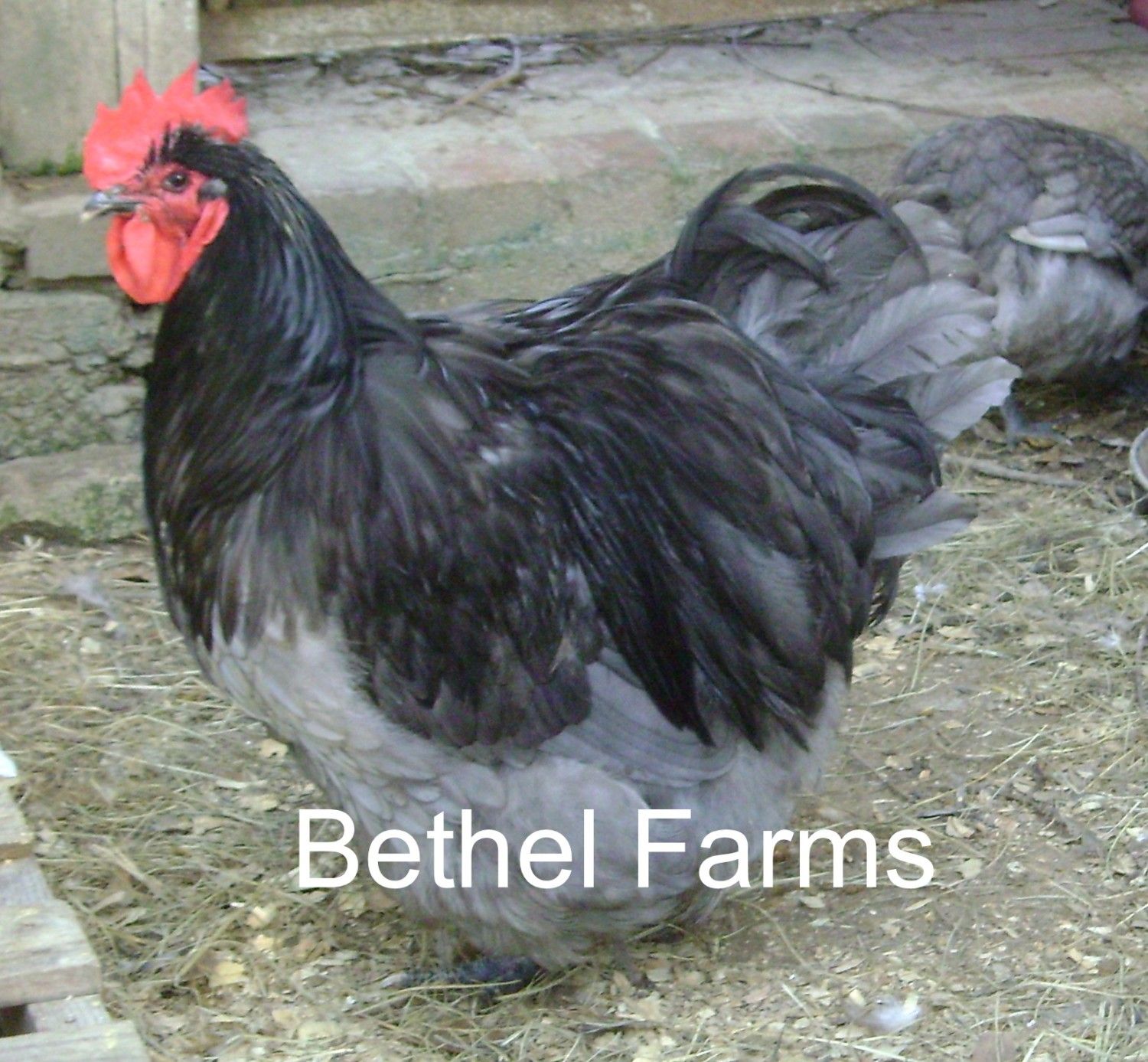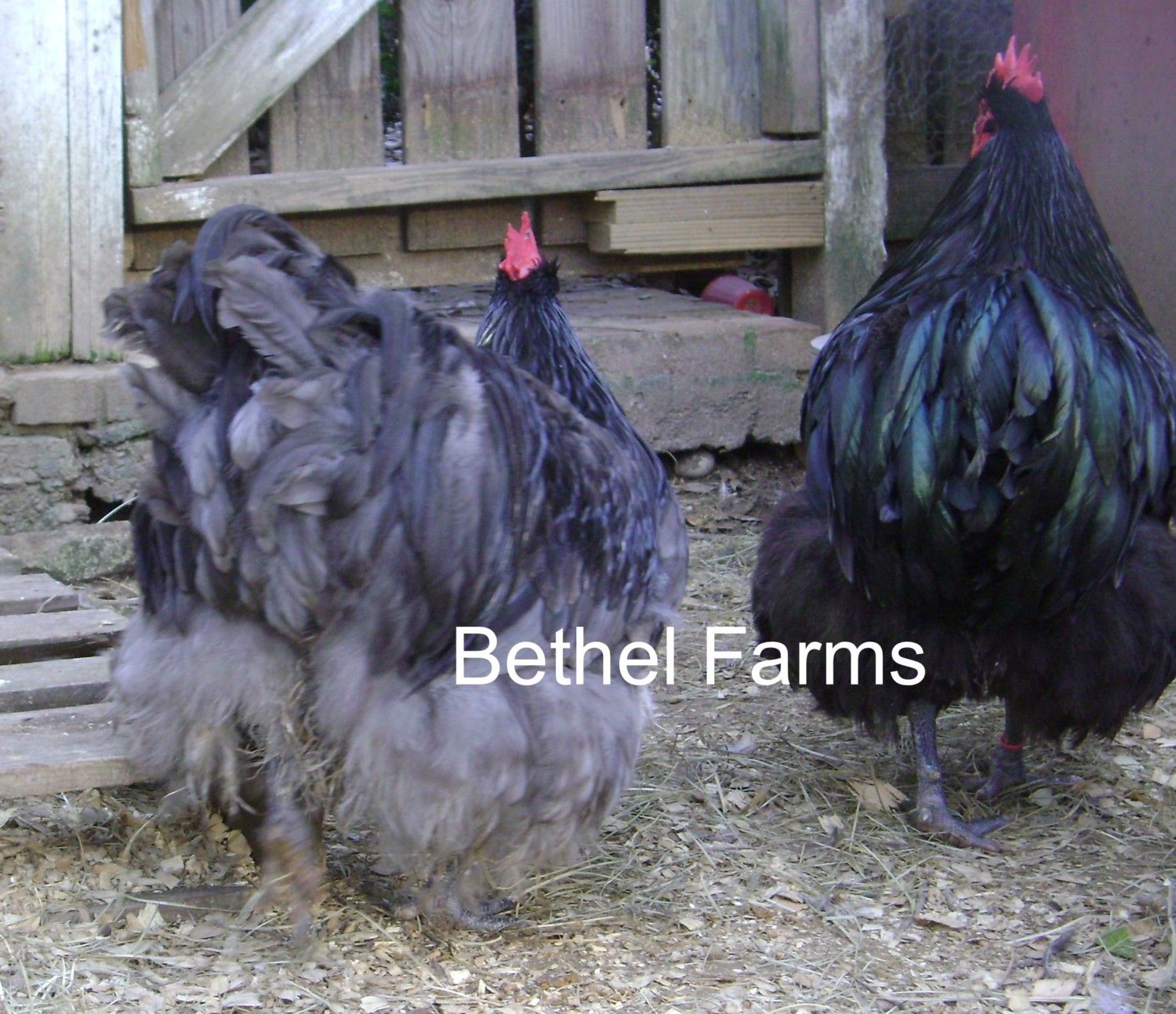Ha ha- I have to agree with you about how cochins walk. My roos walk like they're playing "don't step on the cracks".
Navigation
Install the app
How to install the app on iOS
Follow along with the video below to see how to install our site as a web app on your home screen.
Note: This feature may not be available in some browsers.
More options
You are using an out of date browser. It may not display this or other websites correctly.
You should upgrade or use an alternative browser.
You should upgrade or use an alternative browser.
Post Pics Of Orps/ Orpingtons HERE
- Thread starter OSUman
- Start date
Dave,Aveca, please don't try to remove the photo. It's a good one of a spectacular bird. It's "lifted" off what is essentially public domain and only for other's pleasure and education. Shouldn't be a problem and I try to be careful. Walt, interesting observations on your part which is part of why I, who have been involved with Cochins most of the last 40 years, can't quite figure out the idea of Cochin influence. If someone can find me big, rugged, raw boned true Aisiatic type Cochins that have underlines like this please let me know. As has been mentioned the tail is very, very different than a Cochin as is the way the bird is put together under that feather. They are not built the same and do not use their legs in the same way, at least not according to some of the video available that shows UK type Orps on the ground. I admire the APA type of Orp when it's really what it ought to be. And as far as Orps on the ground I'd love to see this guy and a bunch of relatives on my ground.
The shape is more like a bantam Cochin here in the US, but I have seen both blacks and buff LF here with this shape in a female, not a male. Male LF Cochins usually have a more upright stance.That was back in the day though. I notice the blacks are again approaching this type (in females) but this is an awesome bird.
The things that jump out at me are: The wings while tight are not pushing the fluff out like the last picture of Ruths black bird and the comb is very Cochin like and it has long wattles. Yes, it is a single comb, but that is the kind of single comb you would find on a Cochin and not some other breed.....usually. It also does not have the Asiatic head/skull of a Cochin.
LF Cochins have a peculiar gate.....almost funny in a way.
Walt
I started out with plain ole American Orps that had no real size to them. I added various degrees of "English" Orps to get the size up and make a more magnificent looking bird, (from my perspective), than what I had. I am not able to show birds because of the other constraints on my life and my time but who knows, maybe one day. In the meantime, as with all of my breeds, I do try and breed a bird that can be shown in APA shows. I might be shooting myself in the foot by mixing in some "English" birds but I'm liking what I'm seeing as far as size increase but I do want to stick as close as possible to APA SOP so that others can buy and show or buy and breed my birds and continue working on them. I did sell a young cockerl to someone last year that won Best of Breed in the APA show she entered it in but I know one show does not a show-bird make. So....I'm honestly asking for comments (hopefully more good than bad - LOL) of these two young cockerels - both from this summer's hatch. From what I've been reading and learning SOP doesn't want a curved tail???? At least I think that's the way I'm understanding the most recent posts. I do read the SOP on all breeds that I raise but somewhere between reading it and envisioning it, I loose something. Sometimes what I read and envision isn't what I see when I see photos that supposedly show a good specimen of the SOP. I'm still working on Black Copper Marans and I've read the SOP a million times. Someone posted that breeders should go to shows and I know that would really help me - to see birds in person - but unfortunately that's not in my ability right now.
Walt, I would treasure your comments on these two cockerels. Should I use one or the other or both or neither in a breeding program for APA SOP Orpingtons? Again, still working on my line that seriously needed some increase in size. This year I have only my largest birds in breeder pens. But, please do excuse the mess of the pens and the birds. It's our rainy season and it hasn't stopped raining for several weeks. The pens are a mess, the birds are a mess, there are tarps covering everything just to try and give them some dry spots outside of the coop but they are staying wet and muddy.




Both of them, side by side, where you can see the tails from their backside:

Thanks for any helpful comments.
OK...this last picture tells the story. Do these two birds look like the same breed? No! The Black could pass as a US Orp, but it is way too narrow for good type. The wings are nice and tight, but they are pushing out all that loose feather fluff so that it looks odd. You can almost see the hock, so it could pass as a US Orp....although a skinny one. The black also has a decent profile other than the angle of the back/tail which seems too low. These are just pictures, so I can only do so much in the way of a critique. The main thing is that the black bird which could pass as a run of the mill US Orp is too narrow and it's feathers too loose. The blue is whatever anyone wants to call it, but it does not fit into any APA SOP class.
Do you have a current APA SOP Ruth?
Walt
Last edited:
Walt, how would you like to judge a class of a 100 of those?
Quote:
I would love to judge a class of 100 of those birds. It would be unlikely that all 100 were of that quality and overall condition. This is one of those times where a person would not even have to know about chickens to know that this bird is special. Besides being an outstanding looking bird (I'm not considering anyone's Standard here), this bird is conditioned to a point that we don't see often in LF.
Walt
Walt
OK...this last picture tells the story. Do these two birds look like the same breed? No! The Black could pass as a US Orp, but it is way too narrow for good type. The wings are nice and tight, but they are pushing out all that loose feather fluff so that it looks odd. You can almost see the hock, so it could pass as a US Orp....although a skinny one. The black also has a decent profile other than the angle of the back/tail which seems too low. These are just pictures, so I can only do so much in the way of a critique. The main thing is that the black bird which could pass as a run of the mill US Orp is too narrow and it's feathers too loose. The blue is whatever anyone wants to call it, but it does not fit into any APA SOP class.
Do you have a current APA SOP Ruth?
Walt
Walt - thank you so much for taking your time and doing this for me. It was very helpful. I have the APA SOP as it's posted on the Orpington site but like I said, it's hard for me to visualize the descriptions. The pictures on the site, from the different shows, help me more but there's a variety of "types" and appearance that I see when I look at them. In other words, I don't see the same bird over and over - I see variations of the bird (if that makes sense) when I look at different show entries' photos.
I added some English blood to help add size to my flock and it's only my first real season of hatching and keeping my own flock's offspring and I'm getting variety (as you've seen from these two cockerels). They are both rather thin since they are somewhat young and have until just recently been free ranging with hundreds of other birds and roosters and not fed non-stop like the breeder birds are. I see them both bulking up now and time will tell how they will fill out. I have a variety of hens that all look slightly different also so I'm trying to pinpoint who to breed to whom to get a consistent look that would meet APA SOP.
Your comments have been very, very helpful. Thank you so much. It was very kind of you. I know others will enjoy learning what to look for in an APA SOP Orpington.
I would love to know "Poultrykeepers" conditioning regimen.


I was thinking the same thing, I do not know everyting about Orpingtons but I know about shipping products long distances and you want to ship what will sell for top dollar and it is not always going to be what is perfect but more what is in demand. I think our friends across the pond are chuckling about this one.
I don't think what is has been or is being Imported is British "Exhibition" stock (picture above)?? Basically it is their version of what we considered average backyard "hatchery" style stock if it were compared to American Exhibition stock. (JMO)
Last edited:
Oops. Wrong thread...
Last edited:
New posts New threads Active threads
-
Latest posts
-
Somewhere_In_The_Clouds' Project 365 Thread ~ 2026
- Latest: Somewhere_In_The_Clouds
-
-
-
-
-
-
Latest threads
-
Official BYC Poll: What Winter Change Do You Notice Most in Your Flock?
- Started by BYC Project Manager
- Replies: 0
-
-
-
-
-
-
Threads with more replies in the last 15 days
-
-
-
-
-
pollipazzi's 365 project
- Started by pollipazzi
- Replies: 73
-
×







